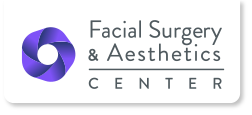
Often performed at the same time as other facial rejuvenation surgery, eyelid surgery (blepharoplasty) involves removing excess skin and/or fat from the upper or lower eyelids in order to help achieve a more youthful appearance.
Blepharoplasty: Upper Eyelids
- The incision is placed in the upper eyelid crease, making it invisible once it has healed.
- Excess upper eyelid skin is removed, causing the eyes to look less tired.
- If present, puffiness near the nasal corner of the eyelid can also be eliminated.
- Heavy-looking upper eyelids are almost always due to a combination of extra upper eyelid skin and brow skin (the skin just underneath the eyebrows).
- Upper eyelid surgery will remove the excess eyelid skin, but will not affect the heaviness caused by the brows.
- Upper eyelid surgery in people with brow heaviness will almost always result in unimpressive results and unhappy patients.
- A brow lift can eliminate the tired, angry-looking appearance caused by brow heaviness.
- A careful evaluation during your consultation will determine if an upper blepharoplasty, a brow lift, or both need to be performed in order to meet your expectations. Make sure your surgeon looks carefully for both of these issues.
Blepharoplasty: Lower Eyelids
- There are two components to lower eyelid surgery: puffiness (“bags”) caused by excess fat pushing against the thin lower eyelid skin, and the wrinkles that occur in this very thin skin.
- Surgery involves removing or repositioning the lower eyelid fat to smooth the puffiness, and removing the excess skin.
- The fat is dealt with through an incision on the inside of the eyelid. The skin is removed through a fine incision hidden in the crease immediately below the eyelashes. Both heal invisibly.
- Part of the reason lower eyelid bags start to become obvious is because the cheeks have fallen. Lifting the cheek, which happens during a facelift, cheek lift, or our signature lift will improve the results of a lower blepharoplasty significantly.
Blepharoplasty: Injectable Options
Fillers and neurotoxins around the eyes, upper cheeks, and forehead has diminished the necessity for blepharoplasty surgery. Injectable treatments have replaced eyelid surgery in younger people, often enabling them to delay eyelid surgery until a time when they can be performed in conjunction with other aging face procedures, creating an overall healthy, youthful appearance.
- A “chemical brow lift,” using a combination of Botox and injectable fillers can often improve upper eyelid heaviness in younger patients and delay surgery for years.
- Recent advances in injectable filler technique allows the grooves of the lower eyelids to be corrected non-surgicially.
- Botox or Dysport used in the crow’s feet and under the eyes help to widen the eyes while smoothing the wrinkles around the eyes. This combination of filler and neurotoxin, can often give the results of a blepharoplasty (sometimes even better), without the surgery.
- These advanced injecting techniques are not easy. Make sure your injector is trained, experienced and comfortable performing them.

